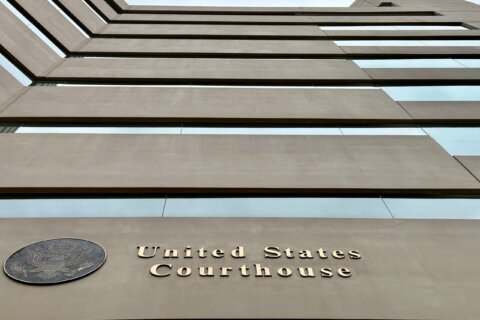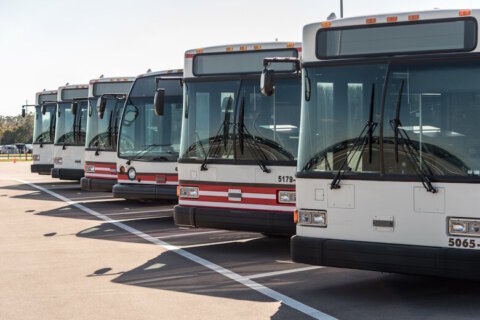Maryland and Pennsylvania are being accused of backsliding on commitments to reduce the amount of pollution that makes it into the Chesapeake Bay.
The claims come in a new report by D.C. nonprofit the Environmental Integrity Project, which said the states are accepting pollution increases by changing goals rather than creating plans for reducing nitrogen pollution levels from urban and suburban stormwater runoff.
Compared to the second phase of plans made in 2012, the organization said that Pennsylvania is allowing 87% more of what is known as the “the Bay’s biggest killer” into the estuary by a previously agreed upon deadline to clean up the Bay of 2025.
The group said Maryland had decreased its originally stated goal by 20% since 2012. That equates to 7 million pounds of additional nitrogen pollution allowed by Pennsylvania and 1.5 million pounds by Maryland, compared to goals set in 2012.
“Things are going in the wrong direction with stormwater and pollution loads are increasing,” said Abel Russ, senior attorney for the Environmental Integrity Project.
The pollution comes from rainwater mixing with things like fertilizer, oil and antifreeze when it falls on streets and parking lots. That stormwater eventually makes its way into nearby waterways, which in turn brings it into the bay.
According to the outlet’s 2018 report, Maryland, Pennsylvania and Virginia accounted for 90% of the urban stormwater nitrogen load, 93% of the phosphorus load and 87% of the sediment load in the bay.
The organization said the states are not doing enough to improve outdated sewer and stormwater systems. It also claims Maryland and Pennsylvania should be creating more green spaces, planting trees and building rain gardens.
Russ also said the states are failing to factor in increased rain being seen because of climate change, citing two devastating floods seen in Ellicott City, Maryland, two years apart from one another.
“Those 10-year storms are happening every two years now,” said Russ.
In response to the organization’s concerns, Jay Apperson, deputy director of the Office of Communications for the Maryland Department of the Environment, said the state continues to strengthen its effort on stormwater retention.
He also raised concerns about the organization’s claim that the adjusted state goals will result in higher nitrogen pollution levels by 2025 than in 2019.
“As a result of Chesapeake Bay model changes [and] improvements in data reporting, load estimates are not comparable,” Apperson wrote.
He said the current phase of the state’s efforts to improve the Chesapeake Bay watershed would lead to a decrease in nitrogen, phosphorus and sediment pollution.
Russ disagrees, noting that compared to a baseline of pollution levels in the Chesapeake Bay from 2009, “They’ll be a little lower than they were in 2009, but basically the same.”
The report was issued a day before Maryland’s Gov. Larry Hogan is expected to chair an annual meeting of the Chesapeake Executive Council.
On the other hand, the organization said Virginia set a goal of allowing 408,000 fewer pounds of nitrogen pollution from making it into the watershed by 2025.
Russ also gave Washington D.C. credit and said the nation’s capital is among the best when it comes to jurisdictions improving stormwater systems.








